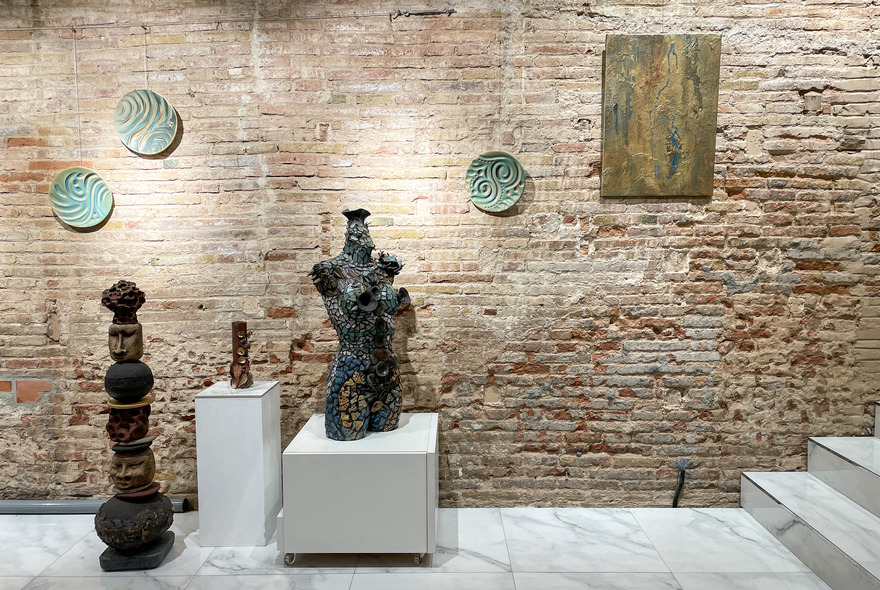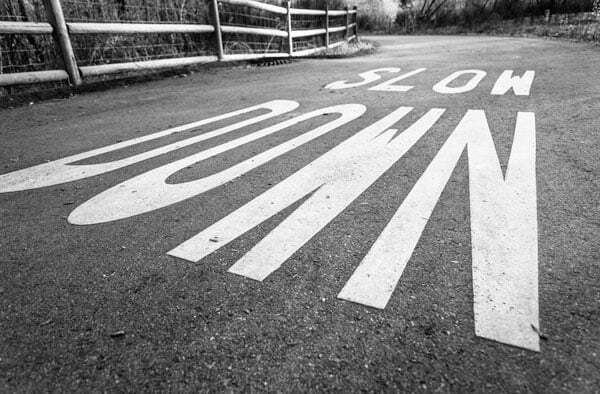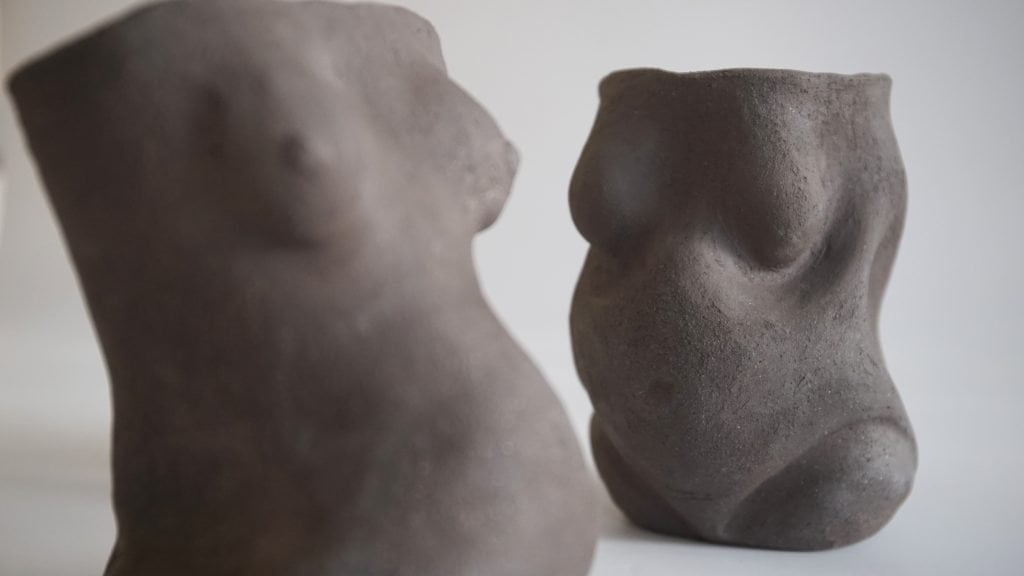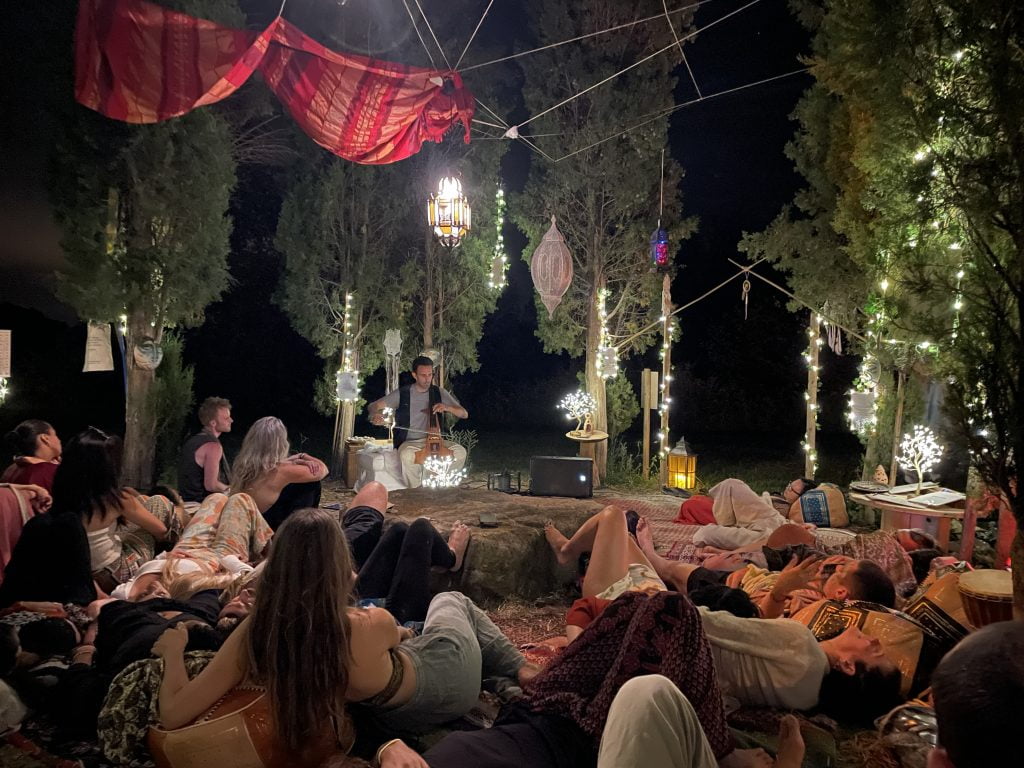Just over two months have passed since I inaugurated my first solo art exhibition at Flash Gallery in Barcelona. Having had time to reflect, I’m now ready to share a few insights I gained from this experience.
Exhibition theme
1. Certain aspects of my concept were too personal to discuss in public
Every art exhibition needs conceptual clarity. Mine was true to both my artistic vision and personal journey. “Room to Breathe” expresses my need for art and nature as my lifelines—the places I run to when I need a breath of fresh air.
My creations helped me process emotions about the profound losses I endured—of my mother, cherished friends, and family members, compounded by the grief of multiple miscarriages. I willingly share these experiences through my art and writing, finding comfort in expression. Thus, I conveyed the ways in which loss and grief have inspired my work in the description of my exhibition.
Then, standing before the audience on opening night, my emotions surged, bringing tears to my eyes. I felt overwhelmed as I attempted to articulate the essence of my work. The intensity, intertwined with public speaking nerves, pushed me to the brink. I swallowed hard, took a deep breath, and refrained from mentioning my losses or the depths of my grief. It was the only way to get through my speech without tears.
My omission didn’t go completely unnoticed. After the speech, a couple of people asked about the role of art in my healing process. I wanted to give viewers insights into the conceptual foundations of my work, but it was so personal that I struggled to effectively communicate my artistic intent during the show.
Though not catastrophic, the experience serves as a lesson for future exhibitions—acknowledging the delicate balance between artistic transparency and personal boundaries.
Making the art
2. There is never enough prep time
For a solo art show, the importance of meticulous planning and organization should be evident. I was offered a spot in the gallery an entire year before the opening date. I told myself that I would start experimenting, painting and making sculptures alongside my usual work making handmade ceramic dishware and decoration for clients and commissions.
Easier said than done. Life is busy and there are always looming deadlines. It was too easy for me to keep pushing back my artistic exploration for a later date. Next week, next month, during the summer…. Until the end of August was around the corner and I hadn’t started.

So I made my decision. My shops were stocked for the holiday season and I didn’t have any big commissions for the fall. So I set aside 3 entire months of pure creation time for my exhibition.
I’m really happy with the artwork I created during that time. It was enough to put together an interesting show. However, I’m left with the doubt about what I could have done had I set aside more time with breaks to rest and reflect.
3. Don’t try to squeeze in every idea at the last minute
In the final days before my show, I was still pushing as hard as possible to bring a few last-minute ideas to life. This caused a fair bit of anxiety. I was rushing to try to get all of my ideas completed and the result was mediocre artworks that hadn’t been fully thought through or prepared with intention and care. Of course, those pieces didn’t make it into the show.
This was a waste of my time and energy. Plus, it made me feel rushed and disappointed right before my show. If I could do it again, I would have been resting and celebrating the work I completed during those three months.
4. Don’t be afraid to try new things
I identify primarily as a ceramics artist. I chose my medium at a young age and haven’t really questioned that decision. However, as I prepared for my exhibition, I confronted a challenge: the large empty walls in the gallery space. While I do create clay wall art, they tend to be smaller pieces, unsuitable for filling the expansive walls. And the prospect of creating a large-scale wall installation seemed daunting given my time constraints.
I opted to explore painting—an artistic realm I had never ventured into. In fact, I was probably a child the last time I painted anything. My lack of experience in this medium stirred profound apprehension. I wasn’t sure if I could pull it off and I didn’t want to fall short on my inaugural solo exhibition.
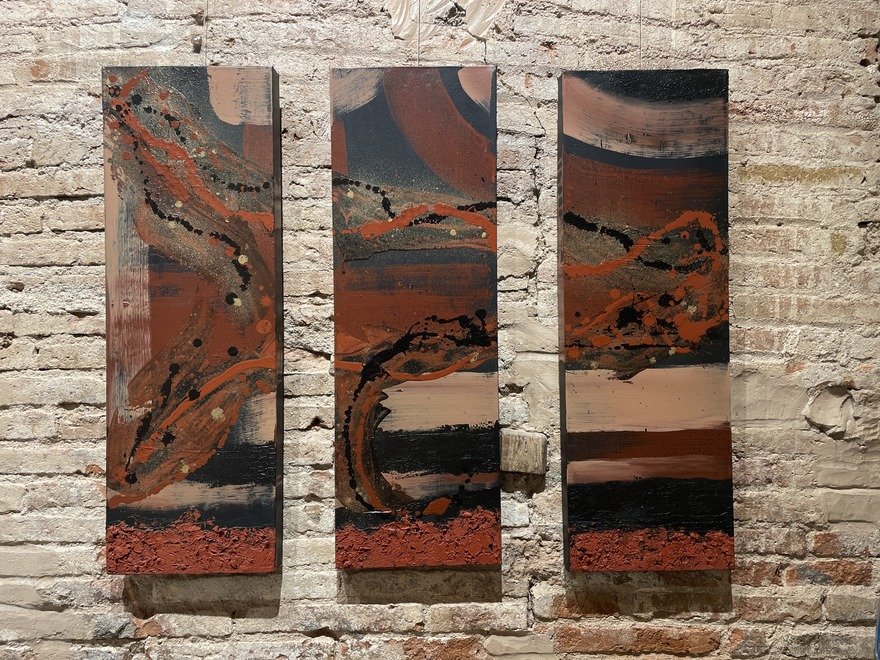
To my astonishment, the outcome defied my anxieties. I sold more paintings than any other medium and my mosaic artworks received the most comments and attention.
This experience reminded me to embrace experimentation and innovation, even in the face of uncertainty. My fears of venturing into uncharted artistic territories in a public forum served only to hinder rather than help my creative evolution.
Staging the exhibition
5. Storytelling is important when arranging your artwork
As the much-anticipated day of my exhibition drew closer, I faced the formidable task of curating and arranging my artwork within the gallery space.
My experience working part-time in small shops had instilled in me a knack for product placement and window displays, which I had always enjoyed. However, as I soon discovered, translating this skill into the context of an art gallery required a different approach. As my friend and fellow artist, Linda Rice, wisely pointed out, the arrangement should not resemble a shop display; rather, it should weave a narrative with the artworks themselves.

Together, Linda and I dedicated an entire evening to crafting the exhibition layout with storytelling as our guiding principle. Despite my initial enthusiasm, I found myself spending the subsequent two days endlessly tinkering with the arrangement, only to realize that my inclination veered too closely towards a ‘shop-like’ aesthetic. Ultimately, I circled back to our original layout, recognizing its resonance with the intended narrative.
The process of curating and setting up the exhibition was hard work. (This is why many artists rely on gallerists for this task.) Nevertheless, having undertaken it myself, I gained invaluable insights into presenting my work effectively, a lesson that will undoubtedly inform my future endeavors in the art world.
The show
6. Receiving criticism can be empowering
As artists, we need to develop a strong resilience in the face of criticism. We must separate personal identity from our artistic expression in order to protect the authenticity of our artistic vision. If we let the opinions of others dictate what we make, we’ll never see our true potential.
Until my show, my exposure to feedback had been limited to the realm of online sales, where positive reviews (thankfully) prevailed. Thus, the experience of receiving spontaneous, face-to-face critique was entirely new to me. One evening, a visitor to the gallery candidly expressed her dislike for one of my sculptures during our conversation. Surprisingly, I found myself embracing her honesty with grace and conviction. Standing steadfastly behind my creation, her feedback neither wavered my confidence nor deterred my artistic direction.
This was an empowering and transformative experience for me.I am grateful for her honesty and straightforwardness, as it afforded me a profound realization. While we may intellectually acknowledge that we cannot please everyone, the emotional impact of dissent can be jarring. However, it’s essential to underscore the importance of respectful dialogue in such exchanges. I commend the woman for her warmth and tact in expressing her sentiments, a reminder of the constructive potential inherent in honest discourse.
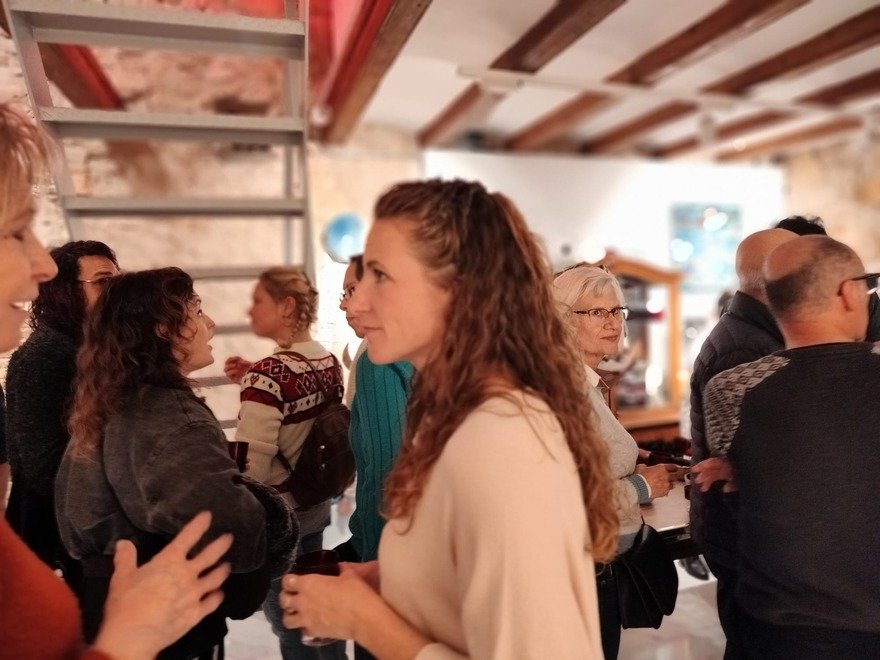
In closing
7. The importance of post-exhibition reflection
The inaugural solo art exhibition is an important milestone in every artist’s journey. It’s a culmination of one’s creativity, dedication and grit. Reflecting on this experience is a crucial step towards personal and artistic growth because it’s how we uncover our strengths and identify areas for improvement.
As I write this blog post, I remember all the things I learned. From the meticulous planning of the exhibition layout to the nerve-wracking moments of public speaking, every aspect of the process has left an indelible mark on my artistic journey.
In sharing these insights, my hope is to offer inspiration and encouragement to fellow artists embarking on their own exhibitions. Thank you for joining me on this journey of self-discovery and artistic exploration.


